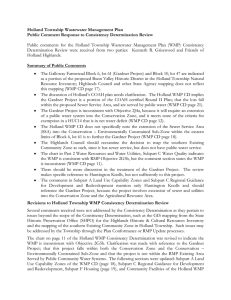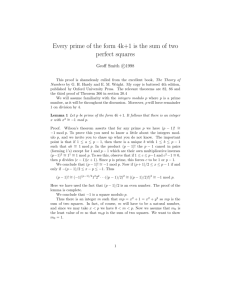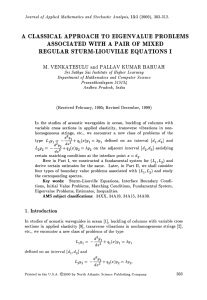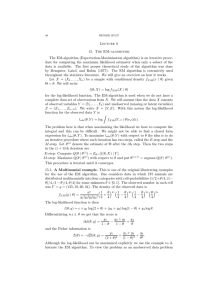Math 5080 Solutions to Exam 1 10/11/2013 − X
advertisement
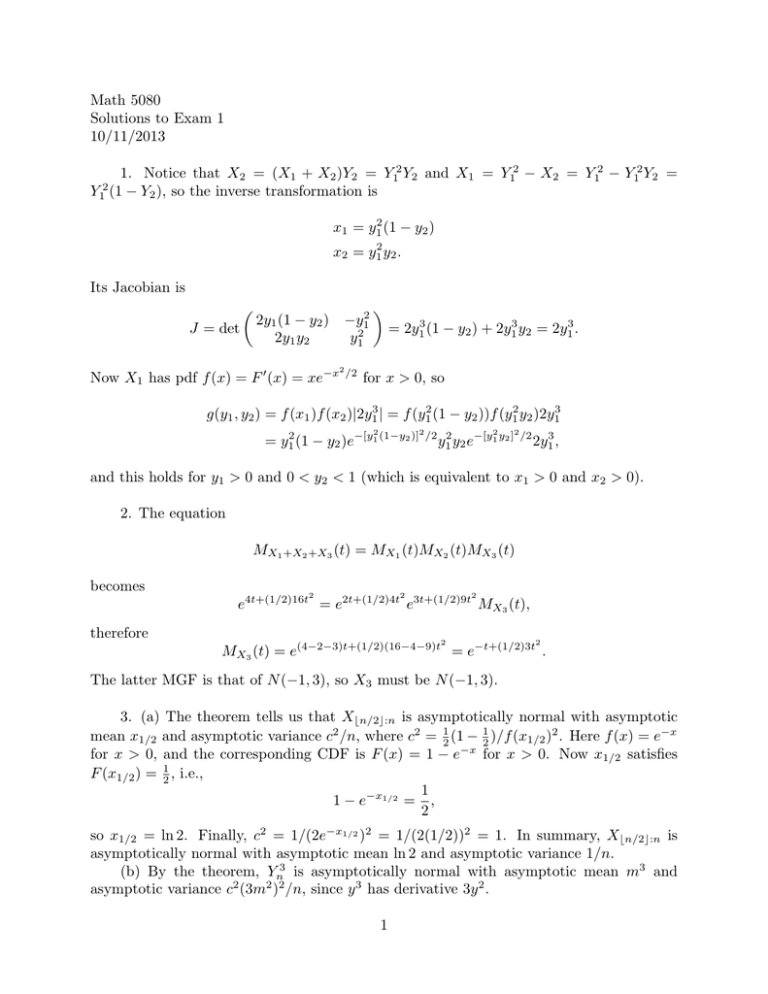
Math 5080 Solutions to Exam 1 10/11/2013 1. Notice that X2 = (X1 + X2 )Y2 = Y12 Y2 and X1 = Y12 − X2 = Y12 − Y12 Y2 = − Y2 ), so the inverse transformation is Y12 (1 x1 = y12 (1 − y2 ) x2 = y12 y2 . Its Jacobian is J = det 2y1 (1 − y2 ) −y12 2y1 y2 y12 Now X1 has pdf f (x) = F 0 (x) = xe−x 2 /2 = 2y13 (1 − y2 ) + 2y13 y2 = 2y13 . for x > 0, so g(y1 , y2 ) = f (x1 )f (x2 )|2y13 | = f (y12 (1 − y2 ))f (y12 y2 )2y13 2 = y12 (1 − y2 )e−[y1 (1−y2 )] 2 2 2 /2 2 y1 y2 e−[y1 y2 ] /2 2y13 , and this holds for y1 > 0 and 0 < y2 < 1 (which is equivalent to x1 > 0 and x2 > 0). 2. The equation MX1 +X2 +X3 (t) = MX1 (t)MX2 (t)MX3 (t) becomes 2 2 2 e4t+(1/2)16t = e2t+(1/2)4t e3t+(1/2)9t MX3 (t), therefore 2 2 MX3 (t) = e(4−2−3)t+(1/2)(16−4−9)t = e−t+(1/2)3t . The latter MGF is that of N (−1, 3), so X3 must be N (−1, 3). 3. (a) The theorem tells us that Xbn/2c:n is asymptotically normal with asymptotic mean x1/2 and asymptotic variance c2 /n, where c2 = 12 (1 − 12 )/f (x1/2 )2 . Here f (x) = e−x for x > 0, and the corresponding CDF is F (x) = 1 − e−x for x > 0. Now x1/2 satisfies F (x1/2 ) = 21 , i.e., 1 1 − e−x1/2 = , 2 so x1/2 = ln 2. Finally, c2 = 1/(2e−x1/2 )2 = 1/(2(1/2))2 = 1. In summary, Xbn/2c:n is asymptotically normal with asymptotic mean ln 2 and asymptotic variance 1/n. (b) By the theorem, Yn3 is asymptotically normal with asymptotic mean m3 and asymptotic variance c2 (3m2 )2 /n, since y 3 has derivative 3y 2 . 1 √ 4. (a) The simplest answer is Y1 = (X1 − µ)/σ. Another is Y10 = (X 4 − µ)/(σ/ 4). (b) The simplest answer is Y2 = X2 − µ σ 2 + X3 − µ σ 2 + X4 − µ σ 2 , but Y20 = (4 − 1)S42 /σ 2 also works. (c) Take Y3 = Y12 /(Y2 /3). The only thing one must be careful of is to make sure that Y1 and Y2 are independent. p (d) Take Y4 = Y1 / Y2 /3. The only thing one must be careful of is√to make sure that Y1 and Y2 are independent. Another possibility is Y40 = (X 4 − µ)/(S4 / 4). 2


